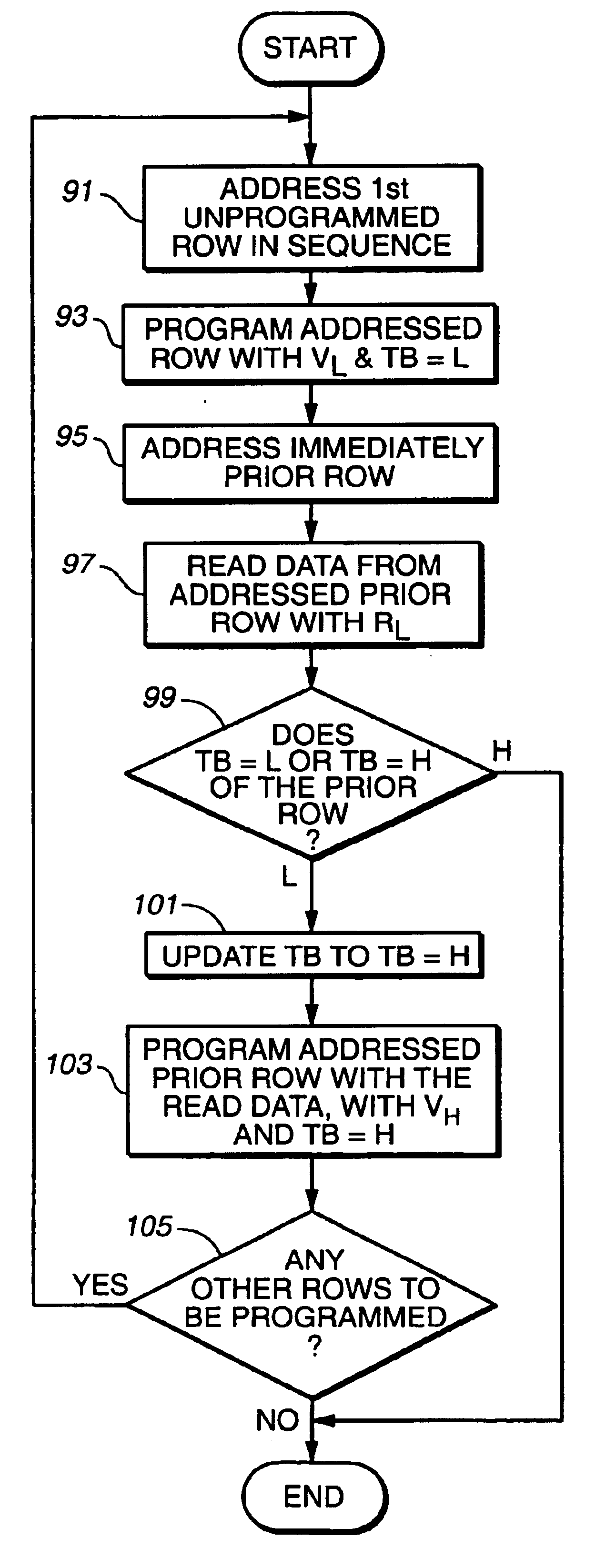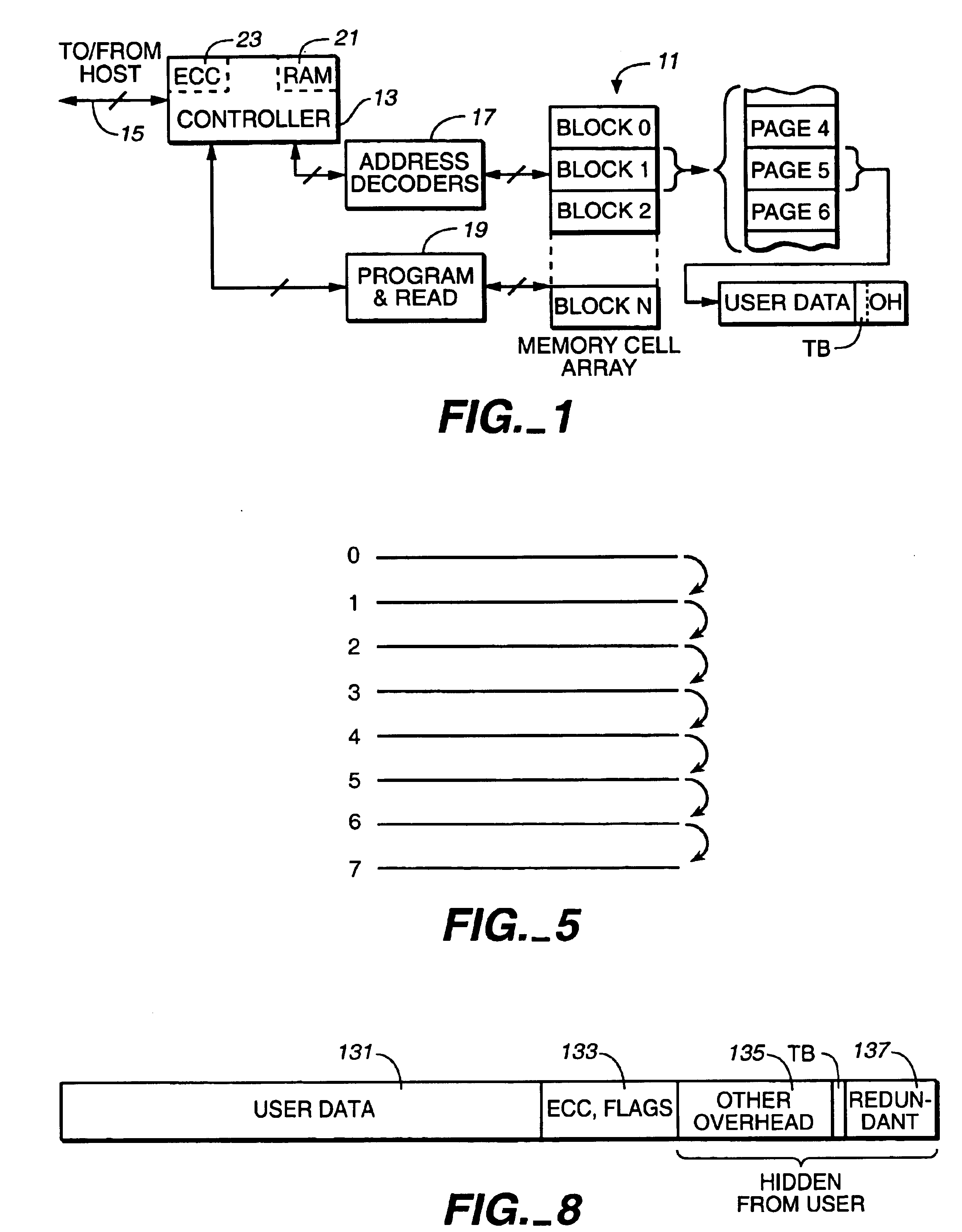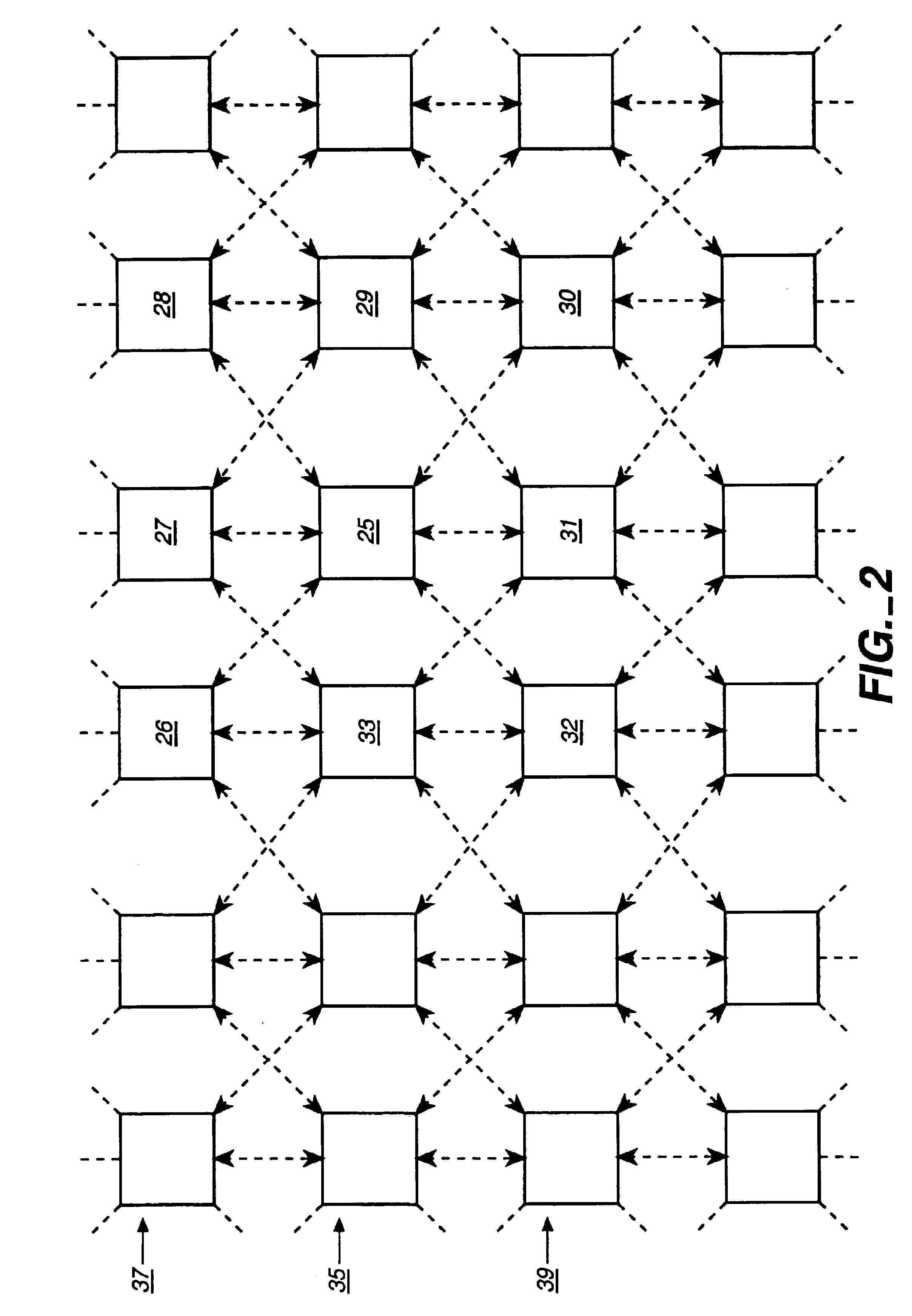Techniques for reducing effects of coupling between storage elements of adjacent rows of memory cells
- Summary
- Abstract
- Description
- Claims
- Application Information
AI Technical Summary
Benefits of technology
Problems solved by technology
Method used
Image
Examples
Embodiment Construction
In order to explain the present invention and example implementations, a general diagram of the interrelationship of major components of an example mass memory system is shown in FIG. 1. A primary component of this system is a memory 11, such as an array of memory cells formed on a semiconductor substrate, wherein one or more bits of data are stored in the individual memory cells by storing one of two or more levels of charge on individual storage elements of the memory cells. A non-volatile flash EEPROM is a common type of memory for such systems, and is used in this example.
A second primary component of the memory system of FIG. 1 is a controller 13. The controller 13 communicates over a bus 15 to a host computer or other system that is using the memory system to store data. The controller 13 also controls operation of the memory cell array 11 to write data provided by the host, read data requested by the host and perform various housekeeping functions in operating the memory. The...
PUM
 Login to View More
Login to View More Abstract
Description
Claims
Application Information
 Login to View More
Login to View More - R&D
- Intellectual Property
- Life Sciences
- Materials
- Tech Scout
- Unparalleled Data Quality
- Higher Quality Content
- 60% Fewer Hallucinations
Browse by: Latest US Patents, China's latest patents, Technical Efficacy Thesaurus, Application Domain, Technology Topic, Popular Technical Reports.
© 2025 PatSnap. All rights reserved.Legal|Privacy policy|Modern Slavery Act Transparency Statement|Sitemap|About US| Contact US: help@patsnap.com



